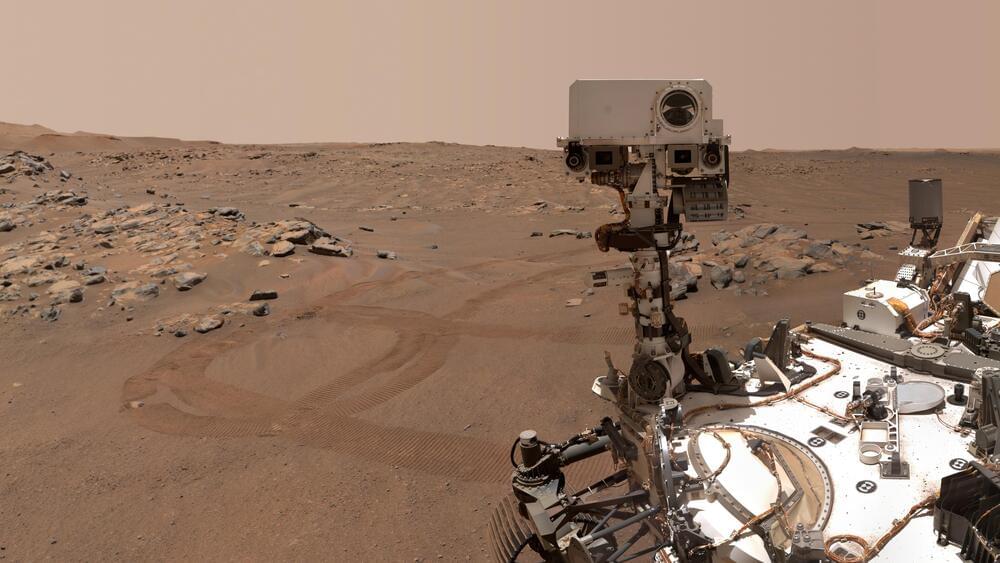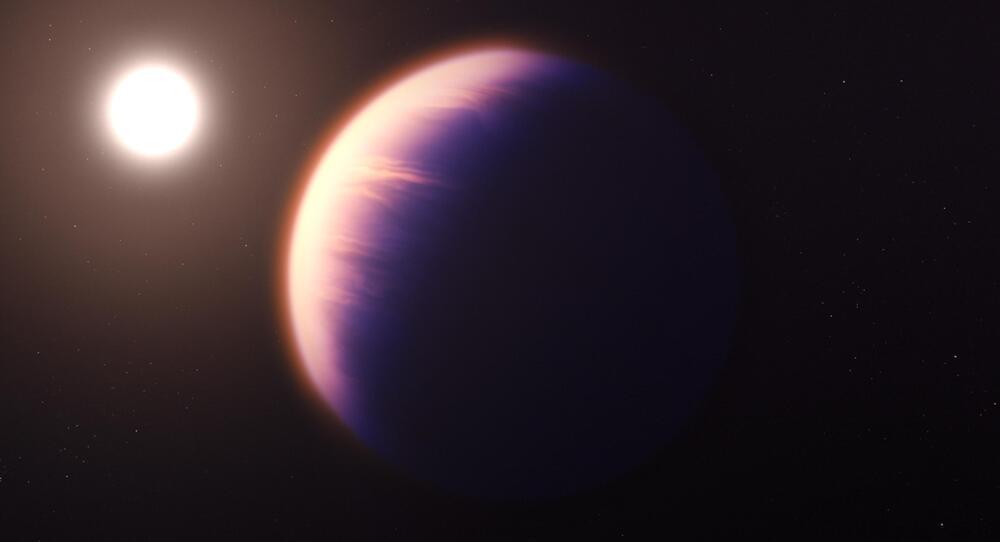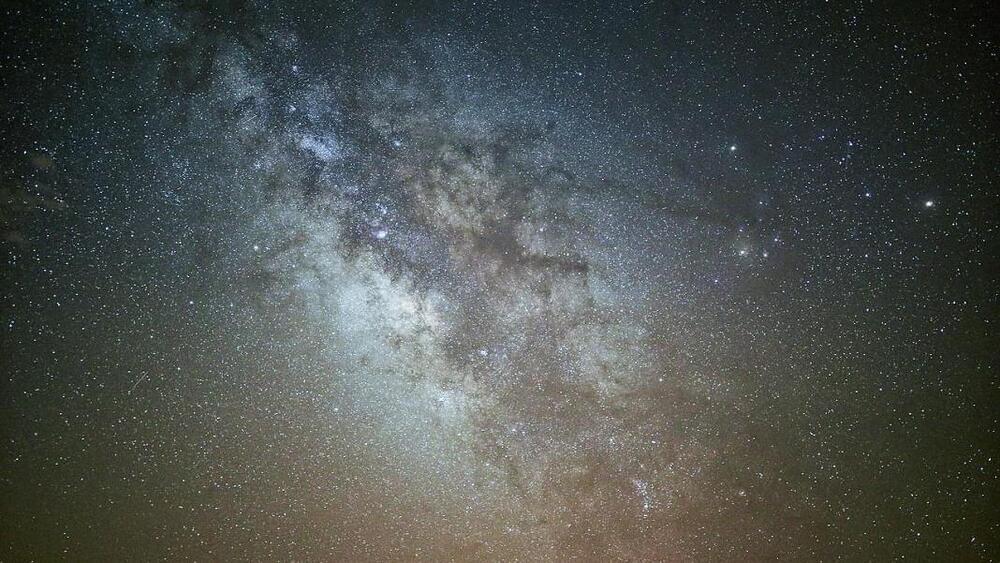The rover found that Jezero Crater’s floor is made up of volcanic rocks that have interacted with water.



It’s a big step forward in understanding exoplanets.
Humanity’s giant space telescope has captured evidence of carbon dioxide in a planet outside of the solar system for the first time. According to a Thursday press release.
The detection was made using Webb’s Near-Infrared Spectrograph (NIRSpec) and took the form of a small bump between 4.1 and 4.6 microns on the spectrum related to the exoplanet’s atmosphere. The evidence helps shine a light on how planets are formed.
NASA’s James Webb Space Telescope has captured the first clear evidence for carbon dioxide in the atmosphere of a planet outside the solar system. This observation of a gas giant planet orbiting a Sun-like star 700 light-years away provides important insights into the composition and formation of the planet.

The Rhythm of Crust Production on Earth
Many rocks on Earth form from molten or semi-molten magma. This magma is derived either directly from the mantle—the predominantly solid but slowly flowing layer below the planet’s crust—or from recooking even older bits of pre-existing crust. As liquid magma cools, it eventually freezes into solid rock.
Through this cooling process of magma crystallization, mineral grains grow and can trap elements such as uranium that decay over time and produce a sort of stopwatch, recording their age. Not only that, but crystals can also trap other elements that track the composition of their parental magma, like how a surname might track a person’s family.
Aug. 24 (UPI) — A team of researchers have discovered an exoplanet about 100 light years away from Earth in the Draco constellation, and they say the world appears to be covered in a deep ocean.
The exoplanet — called TOI-1452b — is slightly larger than the Earth and is located in a “Goldilocks zone,” where temperatures are neither too hot nor too cold for liquid water to exist. Therefore, astronomers think TOI-1452b could be covered in an ocean.
The exoplanet orbits “a nearby visual-binary M dwarf” star.
An exploration of the option of moving planets through gravitational migration and the idea of Earth getting ejected from the solar system and wander the galaxy as a rogue planet, perhaps to be captured by another star in the far future.
My new clips and live channel:
https://www.youtube.com/channel/UCwwuMqY1SXZhTB5hIFFUmlg.
My Patreon Page:
https://www.patreon.com/johnmichaelgodier.
My Event Horizon Channel:

A radical new idea for offshore wind turbines would replace tall unwieldy towers that had blades on top with lightweight, towerless machines whose blades resemble the loops of a whisk. Now new software can help optimize these unusual designs to help make them a reality, researchers say.
This new work comes as the U.S. government plans to boost offshore wind energy. In March, the White House announced a national goal to deploy 30 gigawatts of new offshore wind power by 2030. The federal government suggested this initiative could help power more than 10 million homes, support roughly 77,000 jobs, cut 78 million tonnes in carbon emissions, and spur US $12 billion in private investment per year. As part of this new plan, in June, the White House and eleven governors from along the East Coast launched a Federal-State Offshore Wind Implementation Partnership to further develop the offshore wind supply chain, including manufacturing facilities and port capabilities.
One reason offshore wind is attractive is the high demand for electricity on the coasts. People often live far away from where onshore wind is the strongest, and there is not enough space in cities for enough solar panels to power them, says Ryan Coe, a mechanical engineer in Sandia National Laboratories’ water-power group in Albuquerque.




Darwin has clearly been a guiding presence in Calvo’s attempt to open up a new frontier in science: “He learned to think differently and clearly outside the frameworks in which most of his contemporaries happily confined themselves.” The result of his confinement with the cucumbers was a 118-page monograph on The Movements and Habits of Climbing Plants. Darwin realised before anyone else that these movements were in fact “behaviour”, comparable to that of animals. And observing behaviour is the route to understanding intelligence. In plants, it reveals a range of faculties “from learning and memory to competitive, risk-sensitive behaviours, and even numerical abilities”.
In the course of his book, Calvo describes many experiments that reveal plants’ remarkable range, including the way they communicate with others nearby using “chemical talk”, a language encoded in about 1,700 volatile organic compounds. He also shows how, like animals, they can be anaesthetised. In lectures, he places a Venus flytrap under a glass bell jar with a cotton pad soaked in anaesthetic. After an hour the plant no longer responds to touch by closing its traps. Tests show the plant’s electrical activity has stopped. It is effectively asleep, just as a cat would be. He also notes that the process of germination in seeds can be halted under anaesthetic. If plants can be put to sleep, does that imply they also have a waking state? Calvo thinks it does, for he argues that plants are not just “photosynthetic machines” and that it’s quite possible that they have an individual experience of the world: “They may be aware.”
Other studies show that some plants retain a memory of where the sun will rise, in order to turn their leaves towards the first rays. They store this knowledge – an internal model of what the sun is going to do – for several days, even when kept in total darkness. The conclusion must be that they constantly collect information, processing and retaining it in order to “make predictions, learn, and even plan ahead”.